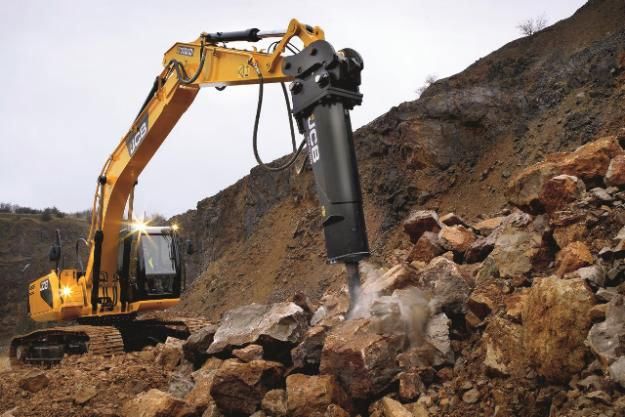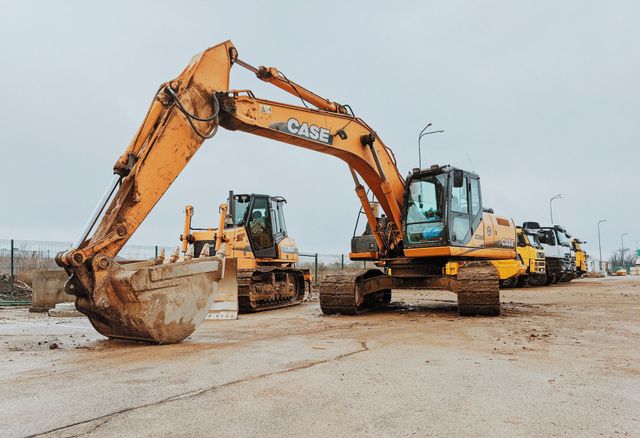Comprehensive Excavation Techniques: Understanding the Basics for Success
In the world of building and civil design, the importance of reliable excavation techniques can not be overemphasized. The careful preparation, specific execution, and careful focus to detail called for in excavation tasks demand a detailed strategy that encompasses various fundamental elements. From preliminary soil analysis to the application of precaution and routine development surveillance, mastering these core components is crucial for achieving success in any excavation endeavor. However, the true mastery lies not simply in recognizing these fundamentals yet in seamlessly integrating them to navigate the complexities of excavation jobs with finesse.
Comprehending Excavation Job Planning

Effective excavation jobs are improved the foundation of thorough and detailed planning. The first phase of any kind of excavation job is the drawing board, where important decisions are made that can significantly influence the outcome of the job. Throughout this stage, it is vital to gather all pertinent information regarding the site, including topographical studies, soil structure, and any kind of potential threats that may exist. Comprehending the task spending plan, scope, and timeline constraints is vital for creating a detailed excavation strategy that ensures the job's success.
One key facet of excavation job planning is the advancement of a comprehensive timeline that describes the series of turning points, activities, and due dates. By carefully taking into consideration all these factors throughout the preparation stage, excavation tasks can be performed effectively and effectively, leading to effective outcomes - lancaster trenching.
Soil Evaluation and Site Analysis
Conducting detailed soil analysis and website analysis is an essential step in the prep work stage of any excavation project. Dirt analysis includes establishing the structure, framework, and residential properties of the dirt at the excavation site. This info is vital for recognizing the soil's bearing capability, dampness content, and capacity for disintegration, which are vital consider identifying the excavation techniques and devices required for the project.
Site assessment exceeds dirt evaluation and incorporates a wider evaluation of the total website problems. This examination consists of recognizing any kind of possible threats, such as below ground energies, ecological concerns, or unstable terrain, that might affect the excavation procedure. By thoroughly assessing the website, project managers can establish reliable excavation techniques that focus on safety, effectiveness, and environmental management.
Utilizing innovative innovations like ground-penetrating radar, dirt tasting, and drone studies can boost the precision and performance of dirt evaluation and site assessment. Investing time and sources in these initial steps can inevitably conserve time and protect against pricey hold-ups or issues throughout the excavation procedure.
Tools Selection and Application
Reliable excavation jobs depend greatly on tactical tools option and usage to make sure ideal efficiency and efficiency. Choosing the best tools for the work is important in maximizing performance and minimizing downtime. Aspects such as the sort of soil, depth of excavation, and job scope play a substantial function in determining the most appropriate devices for the task handy.

In addition to choosing the ideal devices, appropriate straight from the source use is crucial to job success. Operators needs to be educated to manage the tools securely and effectively - excavating ohio. Routine maintenance checks and timely repair work help avoid break downs and guarantee consistent performance throughout the task
Precaution and Rules Conformity
In the world of excavation jobs, prioritizing precaution and compliance with laws is paramount to guaranteeing a lawfully audio and protected functional setting. Precaution include a variety of methods, including carrying out thorough website evaluations, executing proper signs and barriers, and giving appropriate safety training for all employees associated with the excavation procedure. Adherence to guidelines, such as OSHA demands in the United States, makes certain that the excavation job meets the essential requirements to safeguard employees, onlookers, and the surrounding environment.

Tracking Development and Adjusting Strategies
How can project supervisors properly track the innovation of excavation jobs and adapt their approaches as necessary to enhance outcomes? Surveillance development is vital for guaranteeing that excavation tasks remain on track and satisfy deadlines. Task supervisors can make use of numerous devices and techniques to track progression, such as daily report card, regular website evaluations, and progressed tracking innovations like drones and GPS tracking systems. By constantly checking the job's advancement, supervisors can determine any type of possible delays or issues beforehand and take proactive actions to address them.

Verdict
To conclude, grasping the principles of detailed excavation techniques is important for the success of any task. By comprehending project preparation, evaluating soil and website conditions, picking ideal devices, abiding by safety policies, and checking progression, project managers can make certain a efficient and smooth excavation process. Implementing these approaches will cause successful results and decrease prospective threats or problems throughout the excavation project.
The preliminary stage of any excavation task is the planning stage, where critical choices are made that can significantly affect the end result of the project. Comprehending the project range, spending plan, and timeline constraints is vital for creating an extensive excavation strategy that makes certain the task's success.
How can project managers successfully track the development of excavation jobs and adapt their methods as necessary to maximize results? By carefully monitoring progress and being willing to adjust methods, task supervisors can boost the check total success of excavation tasks.
By understanding project planning, evaluating soil and site problems, picking ideal equipment, conforming with security policies, and keeping an eye on progression, project managers can guarantee a reliable and smooth excavation process.